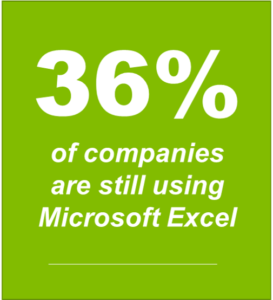Remember Monday to Friday, nine to five, sitting at your usual desk, going to the local coffee shop that makes your cappuccino just the way you like it? When COVID-19 struck, it showed just how quickly the average day in the office can become anything but.

As the coronavirus spread, short-term business travelers unexpectedly became long-term mobile workers, as border closures left them unable to return home. Local and national lockdowns saw offices forced to close, transforming huge swaths of staff into remote workers practically overnight (and we know exactly what that’s like ourselves).
With health professionals expecting a second wave of the virus imminently, the only certainty for organizations and their global workforces is there’s unlikely to be an end to uncertainty any time soon.
Managing the unexpected
COVID-19 offers a high-profile illustration of how organizations sometimes have to make abrupt and unanticipated changes in their global mobility programs, but it’s not the only one. Border closures and political instability have all led organizations to make last-minute adjustments to their workforces, often moving large groups of employees – even entire offices – across the globe at short notice.

For organizations, handling unexpected events such as COVID-19 can be a challenge. Mobility teams must be aware of each employee’s location and needs. Finance needs to stay on top of sudden changes in expected and actual costs. HR must be able to support employee well being. Individual employees want to feel they have clarity on the changes they’re going through.
When conditions can change at a moment’s notice, it’s crucial to have a global mobility system that accurately reflects the situation on the ground. But not all businesses are able to capture an accurate, real-time view of their mobile workforce: recent research by the Global Mobility Executive and Equus found that 36 percent of companies are still using Microsoft Excel to manage their employee mobility programs – a very manual and time consuming way to track and identify individuals.
Businesses using spreadsheets also risk delays in data updates, and additional work triggered by such changes. Most organizations, however, recognize the value of Global Mobility platforms that can automate business tasks: 92 percent of organizations said the ability to automate manual processes was important functionality for a GM system, while 83 percent rated the ability of GM systems to produce reports and speed up internal processes as key advantages.
A snapshot of your global workforce

Recent disruptions have shown just how important it is to have insight into where each member of staff is and exactly what support both they and the business need at any given time. Real-time data is key. Having a snapshot of each individual – including their visa status, tax position, the support they need for their health and family, and the potential effects on a company’s compliance is critical to effectively managing your program during periods of certainty and uncertainty. It allows you to be more responsive and agile, and provides a vital source of information to help with future planning – whether that involves embracing the new normal, or planning for a return to the old normal.
Having a real-time view of the entire business allows organizations to be more responsive and agile in challenging times. It also provides a vital source of information to help with future planning – whether that involves embracing the new normal, or planning for a return to the old normal.
To find out more about the future of global mobility, download the full GME and Equus report, ‘Welcome to the Future of Global Mobility: The Digital Journey’.













